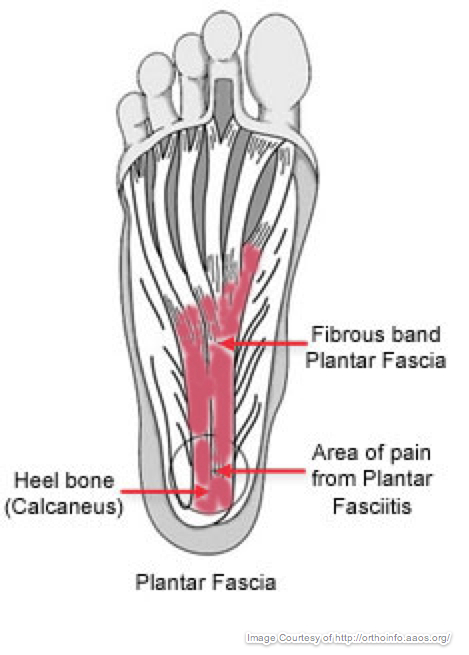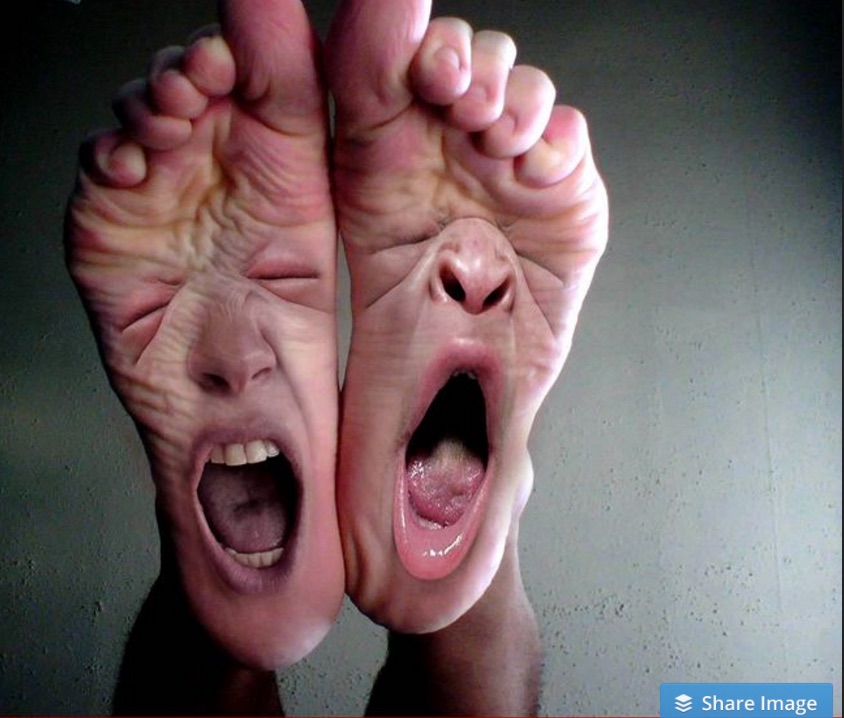Plantar Fasciitis (PF) is a frequently seen musculoskeletal problem of the foot which we treat successfully, almost daily, at the Northside Holistic Center. PF is a painful inflammatory process of the plantar fascia, which is the connective tissue on the sole of the foot beginning at the base of the heel and spreading across the foot toward the toes. It is quite a common problem and can mainifest in two distinct populations: athletes who use their feet a lot and heavier people whose feet bear the brunt of the excessive weight. Those who are suffering with PF, and there are as many as 2 million Americans who go through this each year, experience pain in all or part of this region. The pain is often at its worst as they get out of bed in the morning and can often be exacerbated by flexing the muscles in the toes to bring the toes closer to the shin (referred to as 'dorsiflexion').
PF can trigger many other problems including heel spurs caused by the chronic inflammation in the region causing the calcification, as well as knee and back pain caused by gait changes associated with the pain from the feet. When our patients have been suffering for a long time with plantar fasciitis we will often work on these linked issues at the same time as the problem in the plantar fascia, which is at it's source.
Acupuncture is incredibly useful in remedying this problem and can be used alone or in conjunction with other modalities such as stretching, custom orthotics and physical therapy. It tends to perform much better, long term, and with fewer side effects than steroid injections.

Research/Articles
A Greek study entitled, Treatment of Plantar Fasciitis in Recreational Athletes: Two Different Therapeutic Protocols, (which can be read about here) found that:
Acupuncture should be considered as a major therapeutic instrument for the decrease of heel pain in plantar fasciitis (PF) . . . Scores for pain and mobility/function were significantly smaller [indicating improvement] in the acupuncture group after two months of treatment.
One treatment protocol for plantar fasciitis involves treating the unaffected side. We tend to use this technique when the affected side is so painful that the patient can not bear to be touched in that region. While on the surface this may appear counterintuitive, it is supported by thousands of years of clinical experience. A recent Japanese study demonstrates how this may work from a Western perspective and can be read about here:
Blood supply to the Achilles tendon can be increased by treating the contralateral [opposite side] tendon with either acupuncture or a heat pack. Japanese scientists used lasers to measure blood volume (THb) and oxygen saturation (StO2) of treated and non-treated tendons during treatment (10 minutes for acupuncture, 20 minutes for heat) and recovery periods (40 minutes). During both treatments, THb and StO2 of the treated tendon increased significantly from the resting level. The increased THb and StO2 of the treated tendon were maintained until the end of the recovery period after removal of the acupuncture needle, but they decreased after removal of the hot pack. Although THb of the non-treated tendon did not change during either acupuncture or heat treatment, it increased gradually after removal of the acupuncture needle or hot pack. The authors suggest that blood circulation to an injured tendon in a plaster cast could be improved by applying acupuncture or heat treatments to the contralateral healthy limb.
A British study, from the Orthopedics Department of a Bedford hospital [read it here], on the effects of acupuncture for non-responsive plantar fasciitis concluded that:
Our study demonstrates that acupuncture is effective in treating patients with chronic heel pain due to plantar fasciitis and that the addition of trigger point acupuncture in poor or non-responders may be useful.
The National Center for Biotechnology Information (NCBI) made available the abstract of a study demonstrating the efficacy of acupuncture for plantar fascitis, finding a success rate of more than 80%. The study can be read about here.
 Tuesday, June 27, 2017 at 5:18PM
Tuesday, June 27, 2017 at 5:18PM 
 Plantar Fasciitis,
Plantar Fasciitis,  Plantar fascitis,
Plantar fascitis,  foot pain,
foot pain,  runner,
runner,  running injury. in
running injury. in  Disorders
Disorders 